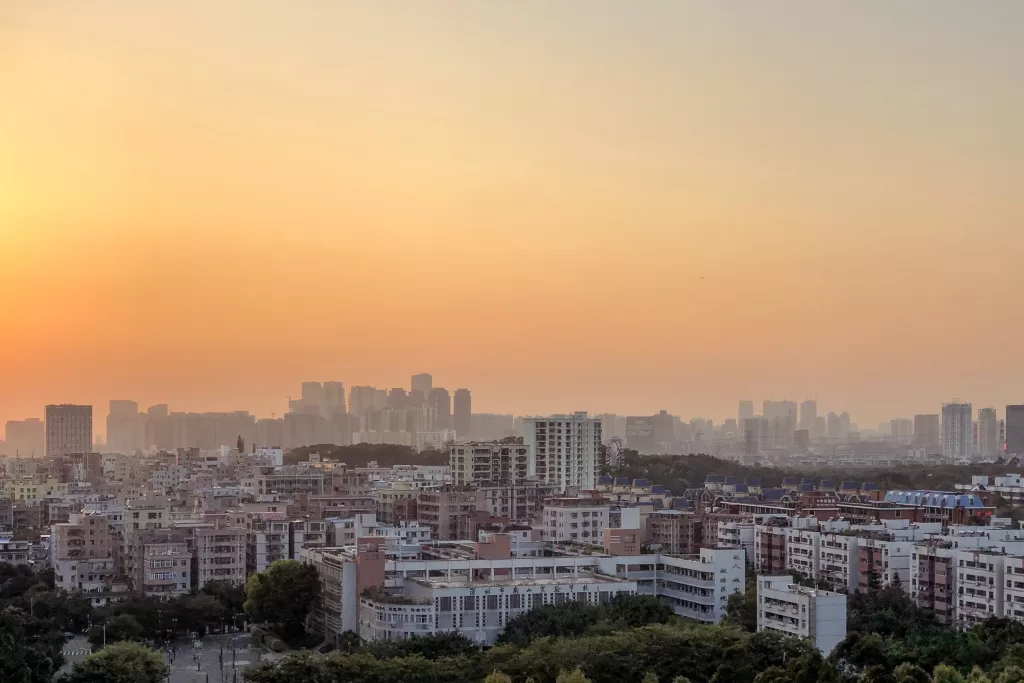Amidst sky-rocketing rates for proper housing facilities, the government of India launched the Pradhan Mantri Awas Yojana (PMAY)—a housing scheme to help you build a safe and functional all-weather home in an affordable manner. Understand what is the meaning of PMAY, its eligibility criteria, benefits and more.
What Is PMAY Scheme?
PMAY stands for Pradhan Mantri Awas Yojana. A flagship mission by the Ministry of Rural Development (MoRD) and implemented by the Ministry of Housing and Urban Affairs (MoHUA), PMAY aims at providing a pucca house with basic amenities to eligible households. The beneficiaries include households from the Economically Weaker Section (EWS), Low Income Group (LIG), and Middle-Income Group (MIG) categories and slum dwellers.
Objective of PM Awas Yojana
The PMAY scheme’s primary objective is to provide all weather pucca houses to eligible beneficiaries in the urban and rural areas of the country.
Features of the PMAY Scheme
Some of the most prominent features of the scheme are mentioned below:
- PMAY scheme aims to promote women empowerment by providing female members of the family complete or joint ownership.
- All houses constructed under this scheme have basic amenities like toilet, water supply, electricity and kitchen.
- Beneficiaries can avail of a loan at low interest rates for building their home.
Types of PMAY Scheme
There are two types of PMAY schemes—PMAY-Urban (U) for urban dwellers and PMAY-Gramin (G) for rural dwellers.
- PMAY-G focuses on addressing the housing shortage in rural areas of India and
- PMAY-U addresses the housing shortage in urban areas of the country.
Benefits of Pradhan Mantri Awas Yojana Scheme—Urban
The benefits of PMAY-U are listed below:
- Rehabilitation of eligible slum dwellers.
- Credit Linked Subsidy Scheme (CLSS) to promote affordable housing.
- Affordable housing in partnership with public and private sectors.
- Subsidiary for beneficiary-led individual house construction/enhancement for individuals belonging to EWS category that require individual house.
Offers and Advantages of PMAY-Gramin
Some of the benefits of PMAY-G are listed below:
- Financial aid of ₹1,20,000/unit and ₹1,30,000/unit for difficult areas, hilly areas, and IAP districts.
- The option to avail a loan of up to ₹70,000 for building a permanent house at 3% lower interest rate.
- Financial aid of up to ₹12,000 for toilet construction in convergence with Swachh Bharat Mission – Gramin (SBM – G).
- Payments are made directly to your bank account or post office account linked to your Aadhar.
- One Liquified Petroleum Gas (LPG) connection per house in convergence with Pradhan Mantri Ujjwala Yojana.
- Beneficiary is entitled to employment as unskilled labour under the Mahatma Gandhi National Rural Employment Guarantee Act (MGNREGA).
Eligibility Criteria for PMAY-G
Certain parameters as per the Socio Economic and Caste Census (SECC) 2011 data are used to determine the eligibility of a person in an objective and verifiable manner.
The scheme includes all households that are living in 0-, 1-, or 2-room houses with kutcha walls and roofs. Automatic or compulsory inclusion under the PMAY-G is provided to the following beneficiaries:
- Households without shelter
- Legally released bonded labourer
- Manual scavengers
- Primitive tribal groups
- Households living on charity
Priority is given to households per the following criteria:
- On the basis of different parameters that reflect housing deprivation in each category— Minorities, scheduled caste/scheduled tribe (SC/ST), minorities and others
- On the basis of houselessness followed by number of rooms in the house (0, 1, or 2)
Households that are either houseless or living in houses with a lower number of rooms shall not be ranked below household living in houses with a higher number of rooms.
Eligibility Criteria for PMAY-U
Here are the eligibility criteria for PMAY-U:
- The families belonging from the LIG, EWS, or MIG category are eligible beneficiaries.
- The applicant or their family member must not own a pucca house in any part of the country.
- The family of a beneficiary must comprise of a legal couple (husband and wife) and their unmarried children.
- The city or town the beneficiary resides in must be covered under the scheme.
- The beneficiary or their family member must not have availed the benefits of any housing-related schemes by the Government of India previously.
Income Range for Economic Groups Under PMAY Housing Scheme
The following are the income ranges per the income groups:
- Economically Weaker Section (EWS): households with annual income of up to ₹3,00,000
- Low Income Group (LIG): households with annual income between ₹3,00,001 and ₹6,00,000
- Middle-Income Group (MIG)-I: households with annual income between ₹6,00,000 and ₹12,00,000
- MIG-II: households with annual income between ₹12,00,001 and ₹18,00,000
How to Apply for the PMAY Scheme?
To register yourself as a beneficiary, go to the official website of PMAY-G and follow the steps mentioned below:
- Log into the PMAY-G portal and fill in personal details sections.
- Upload the consent form required to use Aadhar number.
- Use the search button to find the name, PMAY ID, and priority of the beneficiary.
- Register yourself by clicking on ‘Select to Register’.
- Fill in other details such as ownership type, and Aadhar number.
- Upload the consent form required to use Aadhar number on behalf of the beneficiary.
- Add account details, such as bank account number, of the beneficiary in the next section.
- If you wish to avail a loan, select the given option and enter the desired amount.
- Enter the MGNREGA job card number and SBM number.
- Submit the details.
PMAY-U beneficiaries can use the following steps to register for the scheme:
- Visit the official government website of PMAY-U.
- Select the ‘Citizen Assessment’ and choose the applicable option— ‘For Slum Dwellers’ or ‘Benefits under other three components’.
- Enter Aadhar card details.
- After getting redirected to the online application form, fill in all the mandatory details and upload required documents.
- Save the details and enter the Captcha code to complete the application and take a printout of the same at this stage for future reference or save it as a PDF.
You can also visit a Common Service Centre (CSC) near you and get the application form at the counter for ₹25+GST. After filling in mandatory details and attaching the required documents, you can submit your duly filled and signed form at the CSC to complete the application process.
Documents Required for Pradhan Mantri Awas Yojana
Here is a list of documents required for enrolling in the PMAY-G scheme:
- Aadhaar number and a self-attested copy of the Aadhar card (thumbprint of the person is accept instead of the signature on the copy with a consent letter for people who are illiterate)
- Job card duly register with (MGNREGA)
- Original and copy of bank account details
- Swachh Bharat Mission (SBM) number
- Affidavit stating that the beneficiary or their family member do not own a pucca house
Here is a list of documents required for enrolling in the PMAY-U scheme:
- Aadhar number
- Self-certificate or affidavit as proof of income
- Identity and residential proof
- Proof of minority community if applicable
- Proof of nationality
- EWS/LIG/MIG certificate as applicable
- Property valuation certificate
- Income tax return statements
- Bank details and account statement
- Salary slips
- Proof or affidavit to assert that the applicant does not own a pucca house
- Proof or affidavit to assert that the applicant is constructing a home under the PMAY scheme
Tax Benefits Under PMAY
The subsidy under PMAY is not taxable. However, if the subsidy amount is claimed as deduction in the total income from house property, the deduction will be restricted to the total amount minus the subsidy received to prevent double benefit to the taxpayer.
Bottom Line
Pradhan Mantri Awas Yojana offers numerous benefits for eligible beneficiaries, including financial aid, low interest rate loan, and tax exemptions. A scheme like PMAY provides every household of the country an opportunity to own a house and live comfortably throughout the year. If you are planning to build a house, consider checking your eligibility for the PMAY scheme. If you want to build a home that can withstand the test of time, consider vendors and cement manufacturer like JK Cement that provide quality building materials.
FAQs
What is the maximum tenure for the PMAY scheme?
PMAY-U scheme will continue up to 31st December 2024 (except for the CLSS vertical) for the completion of houses sanctioned till 31st March 2022. PMAY-G scheme will continue up to 31st March 2024. This means that you may apply to avail the benefits of PMAY schemes till 31st March 2024.
Do I need to provide Aadhaar card details for all my family members to avail of a housing loan under PMAY?
No, you don’t. Although the beneficiary availing the loan needs to provide their details, it is not mandatory to provide Aadhaar details of their family members. For more details, visit a Common Service Centre nearby.
How can I apply for PMAY? Where can the application be submitted?
You can apply online on the official government website and submit the application. You can also go to the nearest Common Service Centre (CSC) to apply for PMAY, purchase the application form, and submit a duly filled and signed form back at the CSC.
Is there any update on extension of the last date in 2023 for PMAY MIG?
No, there isn’t. There have been no updates on the extension of last dates in 2023 as of August 2023.
What are the different components or segments of PMAY-U?
The PMAY-U has been divided into the following 4 verticals:
- Affordable Housing in Partnership (AHP)
- Beneficiary-led Individual House Construction/Enhancement (BLC-N or BLC-E)
- Credit Linked Subsidy Scheme (CLSS)
- In-situ Slum Redevelopment (ISSR)













